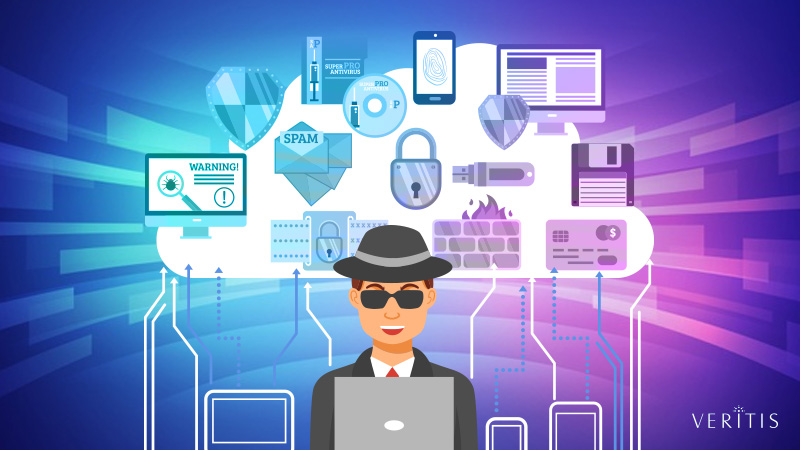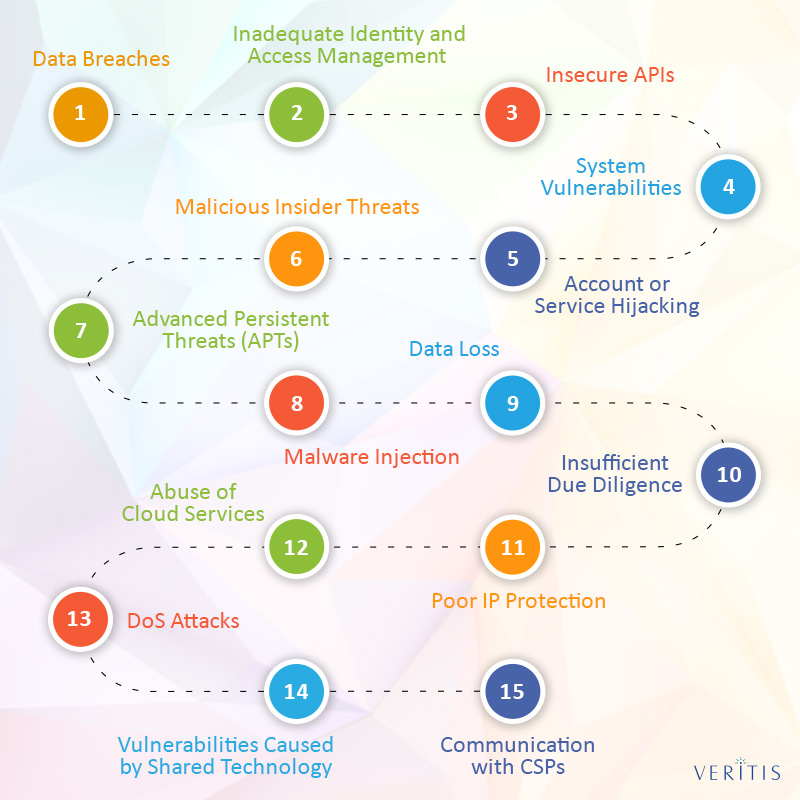
The rapid growth of cloud computing in recent times has transformed the global. However, it has also brought forth numerous security challenges and threats.
The increasing utilization of the public cloud, involving humongous data, is leading to growing cloud security issues and risks.
CSA Survey Findings
The Cloud Security Alliance (CSA), which aims to promote best practices for cloud security, recently surveyed industry experts about the greatest security issues of cloud computing.
The survey results indicate the possibility of several critical issues, such as data breaches, unauthorized access to data resulting from inadequate identity and access management, insecure APIs, service hijacking, Advanced Persistent Threats (APTs), and Denial of Service (DoS).
Security Issues in Cloud Computing and Their Resolution

1) Data Breaches
A data breach involves releasing protected or confidential information to unauthorized individuals or groups. These can result from targeted attacks, poor security practices, application vulnerabilities, or human error.
The vast amount of data hosted by Cloud Service Providers(CSPs) makes them susceptible to data breaches. While cloud providers are responsible for their services, customers or businesses are also responsible for protecting their own data.
Multifactor authentication and encryption are security measures that ensure protection against data breaches.
2) Inadequate Identity and Access Management
Attacks and security breaches can also result from non-usage of multifactor authentication, lack of ongoing automated rotation of cryptographic keys and certificates, and weak password usage.
The lack of scalable identity and access management systems also contributes to unauthorized data access. Multifactor authentication systems, such as smartcards, OTPs, and phone authentication, can go a long way toward addressing this issue.
In legacy systems that use passwords alone, the authentication system should support enforcing policies for strong password usage and an organization-defined rotation period.
3) Insecure APIs
Application Programming Interfaces (APIs) enable cloud services’ provisioning, management, and monitoring, so their security is of prime importance. The interfaces must be designed to prevent malicious efforts regarding authentication, access control, encryption, and activity monitoring.
4) System Vulnerabilities
Attackers can infiltrate and take control of the systems and disrupt the service operations, utilizing the system vulnerabilities or exploitable bugs.
To reduce security gaps and mitigate the damage caused by system vulnerabilities, it is mandatory to install security patches or upgrades, regularly scan for vulnerabilities, and follow up on reported system threats.
5) Account or Service Hijacking
Service hijacking includes attack methods such as phishing, fraud, and exploitation of software vulnerabilities that enable attackers to misuse account access, steal data, impact cloud services and systems, and damage the overall reputation.
Wherever possible, organizations should prohibit sharing account credentials among users and leverage strong two-factor authentication techniques.
6) Malicious Insider Threats
The threat caused by insiders with malicious intent, who might be system administrators having access to critical systems and sensitive information, can tremendously impact a company’s security.
To control this, the CSP must ensure effective policies, segregation of duties, and proper logging, auditing, and monitoring of administrators’ activities.
7) Advanced Persistent Threats (APTs)
Advanced Persistent Threats (APTs) steal data and Intellectual Property (IP) by infiltrating the IT systems of target companies. The common entry points for APTs are spear-phishing, direct hacking systems, and the use of unsecured or third-party networks.
Though APTs are difficult to detect and eliminate, they can be restricted with proactive security measures.
8) Malware Injection
Malware injection attacks are becoming a major security concern in cloud computing. These attacks use malicious scripts or code to eavesdrop, steal data, and compromise the integrity of sensitive information.
9) Data Loss
Data loss can occur for multiple reasons, such as a catastrophe like a fire or earthquake or even accidental deletion by the CSP. To avert this, both providers and users need to ensure proper data backup measures and follow the best practices pertaining to disaster recovery and business continuity.
10) Insufficient Due Diligence
Organizations need to perform the necessary due diligence and develop a proper roadmap before adopting cloud technologies and selecting cloud providers, which might expose them to several security risks.
11) Poor IP Protection
Safeguarding IP demands the highest encryption and security protocols. In addition to identifying and classifying IP to determine potential security risks, vulnerability assessment, and appropriate encryption must be carried out.
12) Abuse of Cloud Services
Malicious attacks can also result from unsecured cloud service deployments, fraudulent account sign-ups and free cloud service trials. Large-scale automated click fraud, hosting of malicious or pirated content, launching distributed DoS attacks, phishing campaigns and email spam are some of the examples of cloud-based resource misuse.
13) DoS Attacks
Denial-of-service (DoS) attacks cause the targeted cloud services to consume disproportionately large amounts of system resources, including memory, disk space, network bandwidth, and processor power, thereby preventing users from accessing their data and applications.
14) Vulnerabilities Caused by Shared Technology
CSPs deliver scalable services by sharing infrastructure, applications, and platforms without substantially altering the off-the-shelf hardware and software.
If the underlying components, such as CPU caches and GPUs, do not offer strong isolation properties for a multitenant architecture (IaaS), multi-customer applications (SaaS), or deployable platforms (PaaS), this could lead to shared technology vulnerabilities.
15) Communication with CSPs
Customers need to define the exact security requirements in the
Service Level Agreements (SLAs) with CSPs. They can use the CSA Security, Trust, and Assurance Registry (CSA STAR) as a reference for understanding the security controls offered by CSPs.
CSPs must also provide details on protecting multi-tenant boundaries and ensuring compliance with the PCI and Federal Information Security Management Act (FISMA).
The Way Forward
Please contact Veritis Cloud Services at connect@veritis.com for more insights and responses to queries on Cloud Security Threats.
